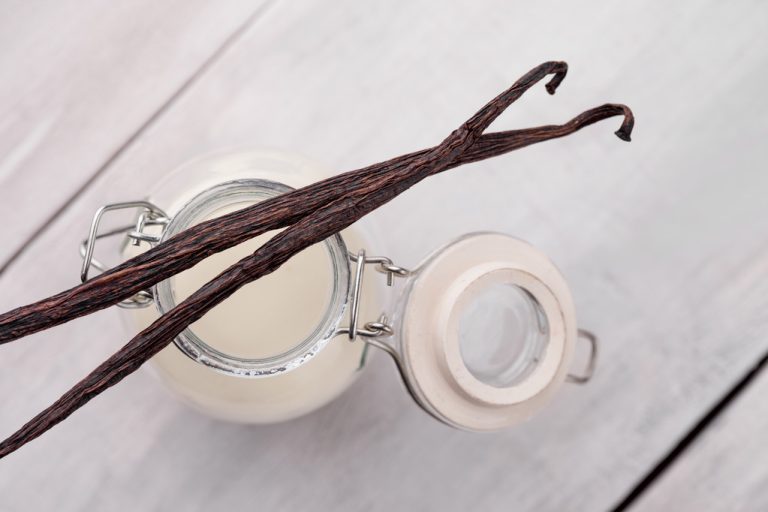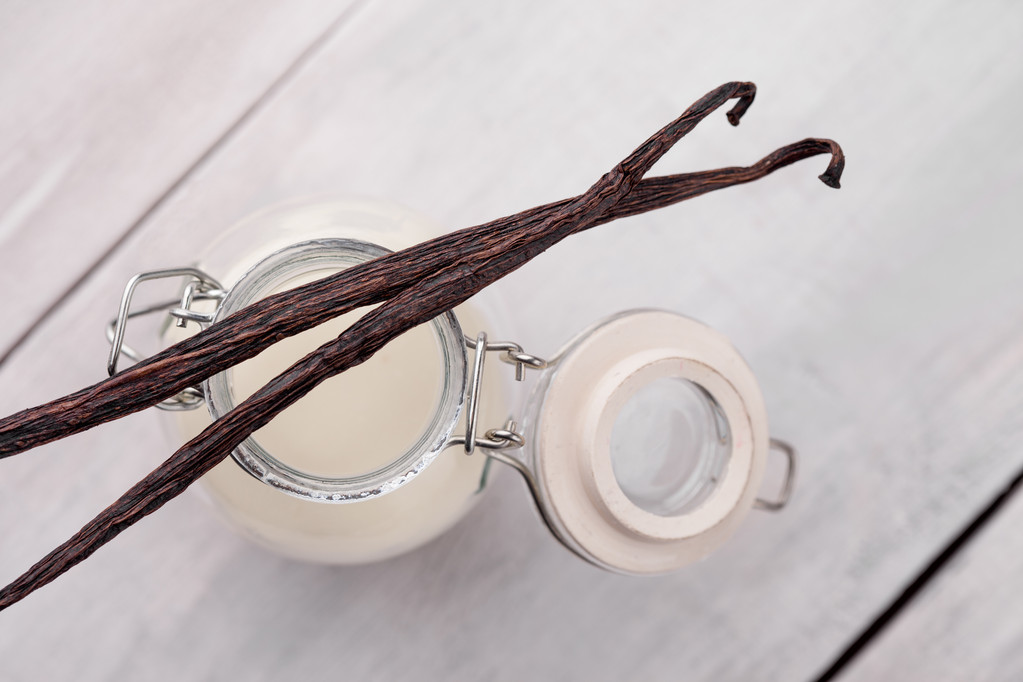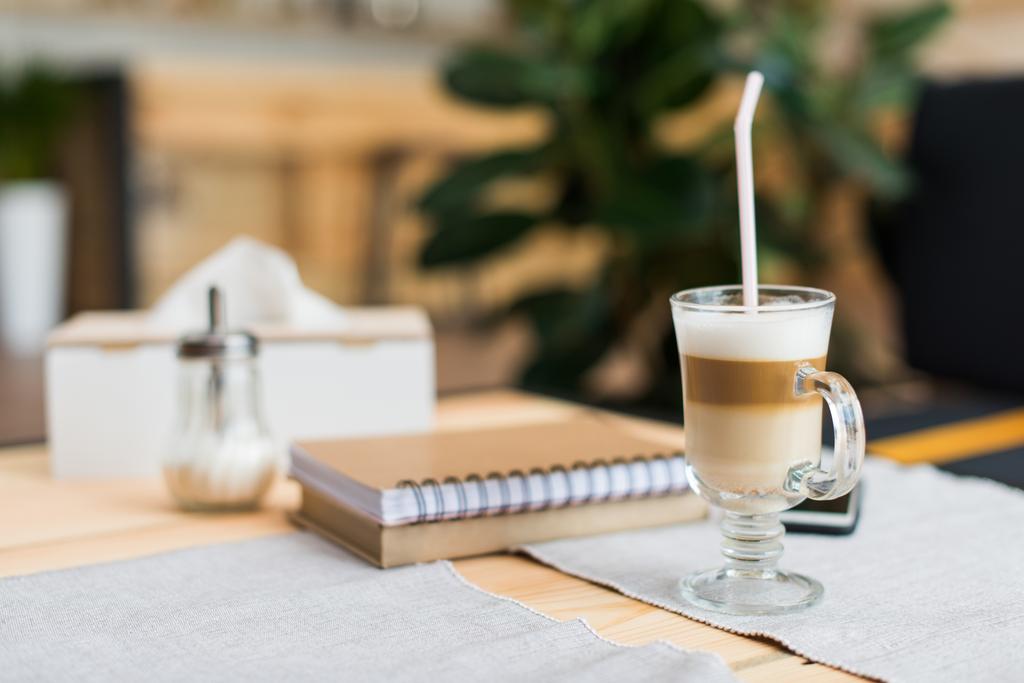Vanillin is known to many people from baking with vanillin sugar. Here we explain the difference between vanillin and vanilla and between vanilla sugar and vanilla sugar.
Vanillin is a flavoring substance found in real vanilla beans. While vanillin is just one of many flavors found in vanilla, it accounts for the majority of the famous vanilla flavor. According to experts, however, it lacks the “bouquet”, the spectrum of different flavors of vanilla. Many people know from rum how multifaceted a bouquet can be. Here, too, connoisseurs speak of the bouquet.

Vanillin: Production of the vanilla alternative
through which he could artificially produce vanillin. With the help of the substance “Corniferins” from coniferous trees, the so-called “sugar splitting” gave it the tasteful vanilla-like aroma. Even today, conifers are an important source of vanillin.
In order to produce vanillin that does not come from real vanilla, “lignin” from spruce wood is usually used. Only rarely is vanillin based on eugenol in clove oil or guaiacol from guaiac trees.
100 kilograms of spruce wood provide about three kilograms of vanillin. Although the source of vanillin is natural, the extraction of vanillin is hardly more.
The necessary substance in spruce wood is obtained as a waste product during paper production by going through a so-called sulfite process. The flavoring produced here is also known as ethyl vanillin.
Flavoring substance vanillin: Many production possibilities
Obtaining it from clove oil is less problematic: the use of mold and bacteria produces the vanillin aroma from the ferulic acid in eugenol. However, this production is significantly more expensive and complex. Vanillin has also been extracted from cow dung and old newspaper.
In addition, vanillin can also be produced completely synthetically from petroleum or coal tar. Because of its carcinogenic properties, the EU severely restricted the use of coal tar.
The demand for real vanilla is too great to meet and vanilla production too difficult (more on this below). According to experts, we cannot avoid vanillin. Flavor expert Professor Ralf Berger advises that manufacturers should focus on biotechnologically produced vanillin (e.g. from clove oil) in the future. It can be produced with the help of living cells, bacteria and yeast fungi. For most foods, manufacturers isolate the basic ingredient vanillin anyway, according to the expert. It is therefore unnecessary to use “real” pods, as the flavoring is completely identical to the biotechnologically obtained substance.
Vanillin as an alternative to vanilla?
The vanilla plant itself (Vanilla planifolia) is a delicate orchid that is very susceptible to crop failures and tropical storms. This circumstance and the high crime rate are also the reason why small farmers in the main cultivation area (the island state of Madagascar) often have to fear for their livelihood. Since the plant is native to South America and lacks the hummingbirds and long-nosed insects that live there, farmers have to pollinate the flowers (40,000 for a kilo of vanilla) by hand. This work, the round-the-clock protection and the fermentation of the pods usually take whole months. A kilo of vanilla beans fetched around 600 euros in 2017. Because vanilla is so sensitive to natural conditions, it is a rarity. The peasants can demand large sums of money and still face the fear of theft and sometimes even murder.

Vanilla and vanillin: Help in the jungle of ingredients
What exactly is the difference between vanillin sugar and vanilla sugar? For real vanilla sugar, you need real vanilla beans. Vanillin sugar, on the other hand, is artificially produced. This is just sugar with an added vanillin flavor, which is mainly produced synthetically.
Vanilla: Vanilla is not a flavor, it is the spice with a “bouquet” of different flavors. If only vanilla is on the ingredient list – without any additional markers – then it’s real vanilla.
Bourbon vanilla: This label indicates particularly high-quality vanilla that comes exclusively from the Bourbon Islands (e.g. in La Réunion or Madagascar). Since these are the main growing areas for vanilla, most of the real vanilla comes from there.
Vanilla extract: Here the aroma is extracted with the help of ethanol and sugar and must be obtained 100 percent from the real vanilla pod. It contains a similar range of flavors as real vanilla.
Natural Vanilla Flavor: At least 95 percent must come from real vanilla, with the rest allowed to come from other sources for standardization.
Natural aroma: Although this is a natural source of the aroma, it is not the vanilla itself. For example, the aromas biotechnologically obtained from clove oil are meant.
Vanilla Flavor: If you only see the word “flavor” on product packaging, it’s a man-made substance from a non-natural source. What is meant are flavors from sulfite waste, petroleum or coal tar.
Many think that the black dots scraped out of the pod in pudding or ice cream indicate real vanilla. Unfortunately, these are often ground vanilla beans that have already been scraped out. These no longer contain a special vanilla flavor and are sold cheaply. So always check the list of ingredients for hidden flavors.











